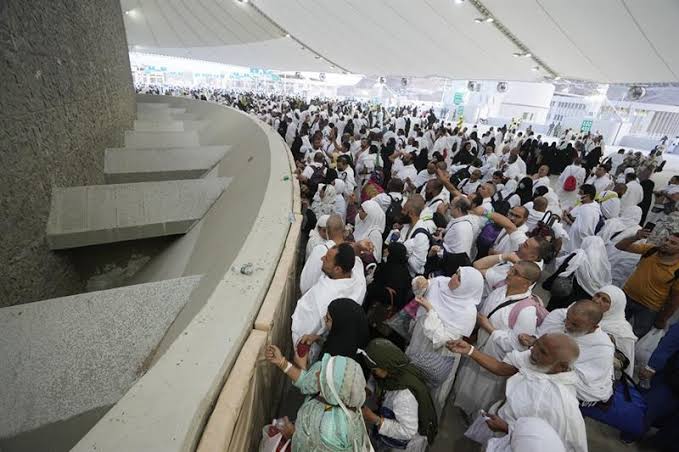On Sunday, pilgrims performed the final major ritual of the haj, known as the “stoning of the devil,” in western Saudi Arabia. This event coincided with the global celebration of Eidul Azha by Muslims.
Starting at dawn, 1.8 million Muslims participating in this year’s pilgrimage gathered in the Mina valley, located just outside Makkah, Islam’s holiest city. The ritual involved throwing seven stones at each of the three large concrete walls that symbolize the devil.
This act commemorates the story of Prophet Ibrahim (Abraham) who, according to Islamic tradition, stoned the devil at these three locations. The story tells that Satan appeared at these spots to try and dissuade Prophet Ibrahim from following God’s command to sacrifice his son. By stoning the devil, Prophet Ibrahim demonstrated his unwavering obedience to God.
The stoning ritual is a deeply symbolic act for Muslims, representing their rejection of evil and temptation. It is one of the final steps of the haj pilgrimage, which also includes other rites such as the circling of the Kaaba and the standing at Arafat.
The haj pilgrimage is a significant event in the Islamic calendar, drawing millions of Muslims from around the world to Makkah each year. It is a time of spiritual reflection, renewal, and commitment to faith. The successful completion of the stoning ritual is a moment of great personal and communal significance for the pilgrims, marking the culmination of their devotion and efforts during the haj.
As Muslims around the world celebrate Eidul Azha, they also remember the story of Prophet Ibrahim and his son, which underscores the themes of sacrifice, obedience, and faith. This annual pilgrimage and its rituals, such as the stoning of the devil, reinforce these core principles of Islam.


